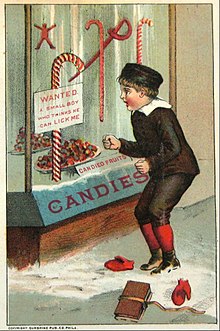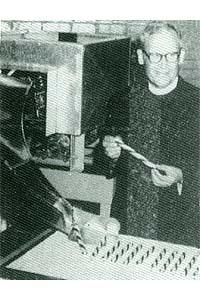One of my favorite things to decorate the Christmas Tree with was Candy Canes.
My family used the traditional peppermint candy cane and, over the years, would throw in different flavors. My sister and I would always sneak a couple throughout the season, especially on Christmas Eve!
Candy canes were always a favorite of mine when I went to Cracker Barrel or Amish Country because they were usually so cheap that I could buy many of them and many different flavors.
However, fun that was, I never knew of the history behind the Candy Cane and why they were shaped the way they were.
History of Candy Canes

This comes from Always a Treat:
Legend has it that in 1670, the choirmaster at the Cologne Cathedral in Germany gave his young singers sugar sticks to keep them quiet during the long Living Creche ceremony. In honor of the shepherds featured in the story, he bent the candies into small shepherds’ crooks. The German tradition was continued in the United States by a German-Swedish immigrant named August Imgard, who celebrated Christmas in Wooster, Ohio, by decorating a small blue spruce with paper ornaments and candy canes in 1847. The tradition began to spread, and around the turn of the century, red and white stripes and peppermint flavors became the norm.
This is a popular legend, but probably is not true. The following is most likely how we came to have the candy canes of today.
Canes known as "candy sticks" were first developed and shown at an exhibition in Massachusetts in 1837. At first, they were just white sticks, and then, over time, the red stripes were added.
They would be called candy sticks for many decades until around 1866, when they would be commonly known as Candy Canes. However, they were still not connected with Christmas, and that connection would take another eight years. In 1874, these canes began to be connected to Christmas, and their flavor was not peppermint. It was just a sugar flavor.

Canes would continue to look like sticks until the Roaring 20s when Bob McCormack began making candy canes for his friends and family. Over time, these candy canes became more popular, and McCormack believed he could start his own business selling these sweet treats. His company was called Bob's Candies.
Bob's canes were already popular, but it was his brother-in-law's invention known as the "Keller Machine" that turned candy canes into what we know today. The Keller Machine was able to turn straight candy sticks into curved candy canes.
That one small change made candy canes a Christmas staple. They could now be hung on trees and placed in other Christmas decorations.
The curving of the candy also made them look like a shepherd's staff or even a J. Over time, after candy canes became popular throughout the country, meanings like this were added.
Meanwhile, Bob's Candies were eventually bought out by Farley and Sathers, who still sell Bob's candy canes!
